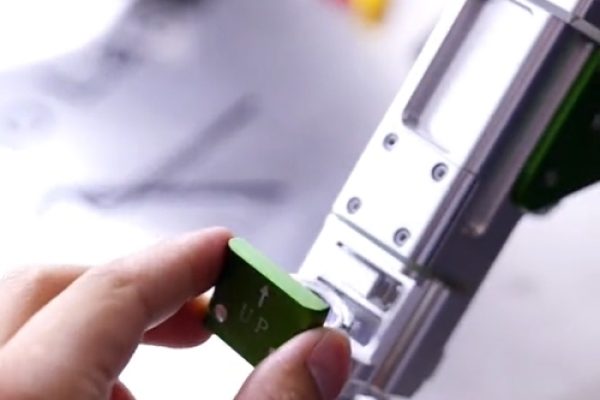Laser welding and laser cleaning machines rely on high-precision optical components such as protective lenses, focus lenses, and collimation lenses. These lenses are critical yet consumable parts that can degrade over time. When they fail, they cause downtime, increase operational costs, and may even impact the quality of work. Understanding why these lenses get damaged and how to prolong their lifespan can help users minimize maintenance costs and ensure optimal machine performance.
Why Do Focus Lenses and Collimation Lenses Get Damaged?
1. Insufficient Air Pressure
The focus lens in a laser system can burn out if the air pressure is too low. Proper air pressure is essential to prevent contaminants such as dust and fumes from settling on the lens surface. When air pressure drops, unwanted particles accumulate, leading to overheating and damage.
Solution: Regularly check and maintain appropriate air pressure settings according to the machine’s specifications. Ensure clean, dry air is supplied to prevent contamination.
2. Incorrect Focus Adjustment
If the focus is misaligned, the laser beam may not pass through the lens at the correct angle, causing localized overheating. This can first damage the protective lens, and if left unaddressed, the damage will gradually extend to the focus lens itself, leading to complete burnout.
Solution: Always calibrate the focus settings properly before operation. If you notice abnormal burn marks or reduced cutting/welding efficiency, inspect the protective lens immediately. Replacing a damaged protective lens in time can prevent further damage to more expensive optical components.
3. Dust Contamination During Lens Replacement
When changing the protective lens or focus lens, improper handling can introduce dust into the optical system. Even a small amount of dust can scatter the laser beam, creating hot spots that burn the lens surface.
Solution: Always handle lenses in a clean environment. Wear gloves, use dust-free wipes, and ensure that the work area is free from airborne contaminants. When replacing a lens, do it quickly but carefully, and avoid exposing the optical path to open air for too long. When dust-free conditions are not available, open optics can be temporarily sealed with masking tape to avoid dust.
4. Poor Handling During QBH Head Insertion and Removal
Collimation lenses are particularly vulnerable to dust contamination when connecting or disconnecting the QBH laser head. If dust particles settle on the lens, they can burn and cause irreversible damage when the laser is fired.
Solution: Before inserting or removing the QBH head, clean the surrounding area, use a dust cover, and avoid touching optical surfaces with bare hands. Always inspect the lens after reinstallation to ensure it is free from contaminants.
How to Extend the Lifespan of Laser Lenses
To reduce lens replacement frequency, minimize machine downtime, and cut costs, follow these best practices:
- Use High-Quality Protective Lenses
- Protective lenses shield the focus and collimation lenses from debris and splatter. Using high-quality protective lenses with proper coatings can significantly reduce damage risk.
- Regular Cleaning and Maintenance
- Establish a routine for cleaning the lenses. Use proper lens cleaning solutions and lint-free wipes. Never use compressed air from an unfiltered source, as it can introduce oil or moisture.
- Monitor and Replace Protective Lenses on Time
- If a protective lens is visibly damaged, replace it immediately to prevent the deterioration from spreading to the focus lens. A timely replacement can save costs in the long run.
- Maintain Proper Airflow and Filtration
- Ensure the machine’s air system is functioning correctly. Use clean, dry air to minimize dust accumulation on lenses.
- Handle Lenses with Care
- Always wear gloves and use proper tools when handling lenses. Avoid touching the optical surface directly and store spare lenses in dust-free packaging.
By following these precautions, users of laser welding and cleaning machines can significantly extend the lifespan of their optical components, reduce maintenance costs, and improve overall machine performance. Proper care and preventive measures will ensure a smooth and efficient laser processing operation with minimal downtime.


